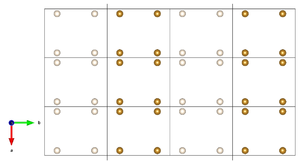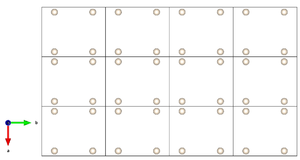Difference between revisions of "Superstructure"
From Online Dictionary of Crystallography
(Created page with "<font color="blue">Surstructure </font> (''Fr''). <font color="black">Superstruttura </font> (''It''). <font color="purple">超構造 </font> (''Ja''). A '''superstructure''' i...") |
(category) |
||
| Line 15: | Line 15: | ||
*[[Substructure]] | *[[Substructure]] | ||
*Martin J. Buerger: ''Journal of Chemical Physics'' '''15''' (1947) 1-16. | *Martin J. Buerger: ''Journal of Chemical Physics'' '''15''' (1947) 1-16. | ||
| + | |||
| + | [[Category:Crystal chemistry]] | ||
| + | [[Category:Fundamental crystallography]] | ||
Revision as of 09:24, 17 February 2019
Surstructure (Fr). Superstruttura (It). 超構造 (Ja).
A superstructure is a crystal structure S’ obtained from another crystal structure (called a basic structure) S under the following conditions:
- the space group G’ of S is a subgroup of the space group G of S;
- the translation subgroup T(G’) of S’ is a subgroup of translation subgroup T(G) of S, i.e. the unit cell of S’ is a supercell of the unit cell of S and the lattice of S’ is sublattice of the lattice of S;
- the point group of P’ of S’ may either coincide with the point group P of S or be a subgroup of it;
- at least one of the Wyckoff positions of S is split into two or more independent Wyckoff positions of S’ and the corresponding crystallographic orbits are occupied by chemically different atoms.

A structure S' obtained from S by reducing its translational symmetry. Atomic positions represented by a different colour are not equivalent in S' and are occupied by chemically different atoms. S is called a basic structure, S' a superstructure of S. Vertical lines expanding beyond the horizontal boundaries of the unit cell indicate the translations along the b direction that are lost in the superstructure.
See also
- Derivative structure
- Substructure
- Martin J. Buerger: Journal of Chemical Physics 15 (1947) 1-16.
